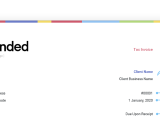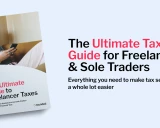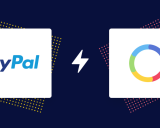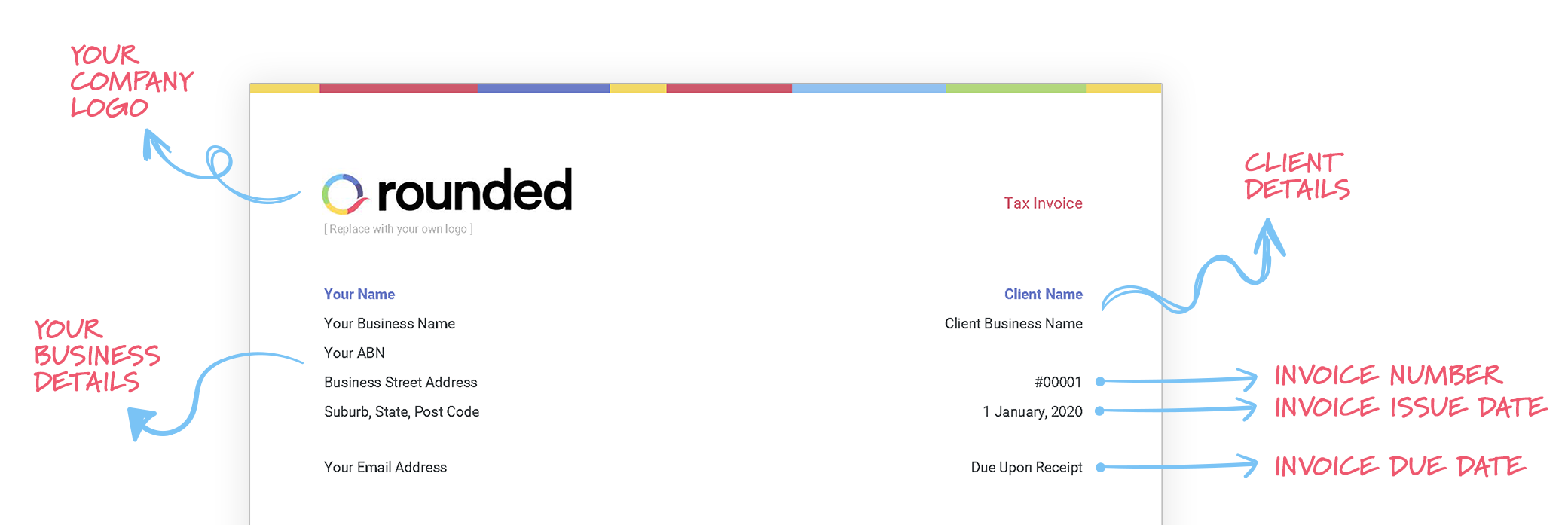
How to survive AI and build a business in 2025: Tips from a veteran creative
After 15 years in the industry, Melbourne-based copywriter Tom Valcanis has seen plenty of trends come and go. When it comes to AI, he’s not worried—technology may be shifting, but human writers and creatives will come out on top.
Article contents
− +- Introduction
- Tom’s journey as a freelance writer
- Challenges of building a freelance writing business
- How is AI affecting creatives like Tom?
- How else has the copywriting industry changed in the last decade?
- Tom’s predictions for 2025
- Final word: Tom’s top tips for solo business owners
- Bonus: How does Tom run his business with Rounded?
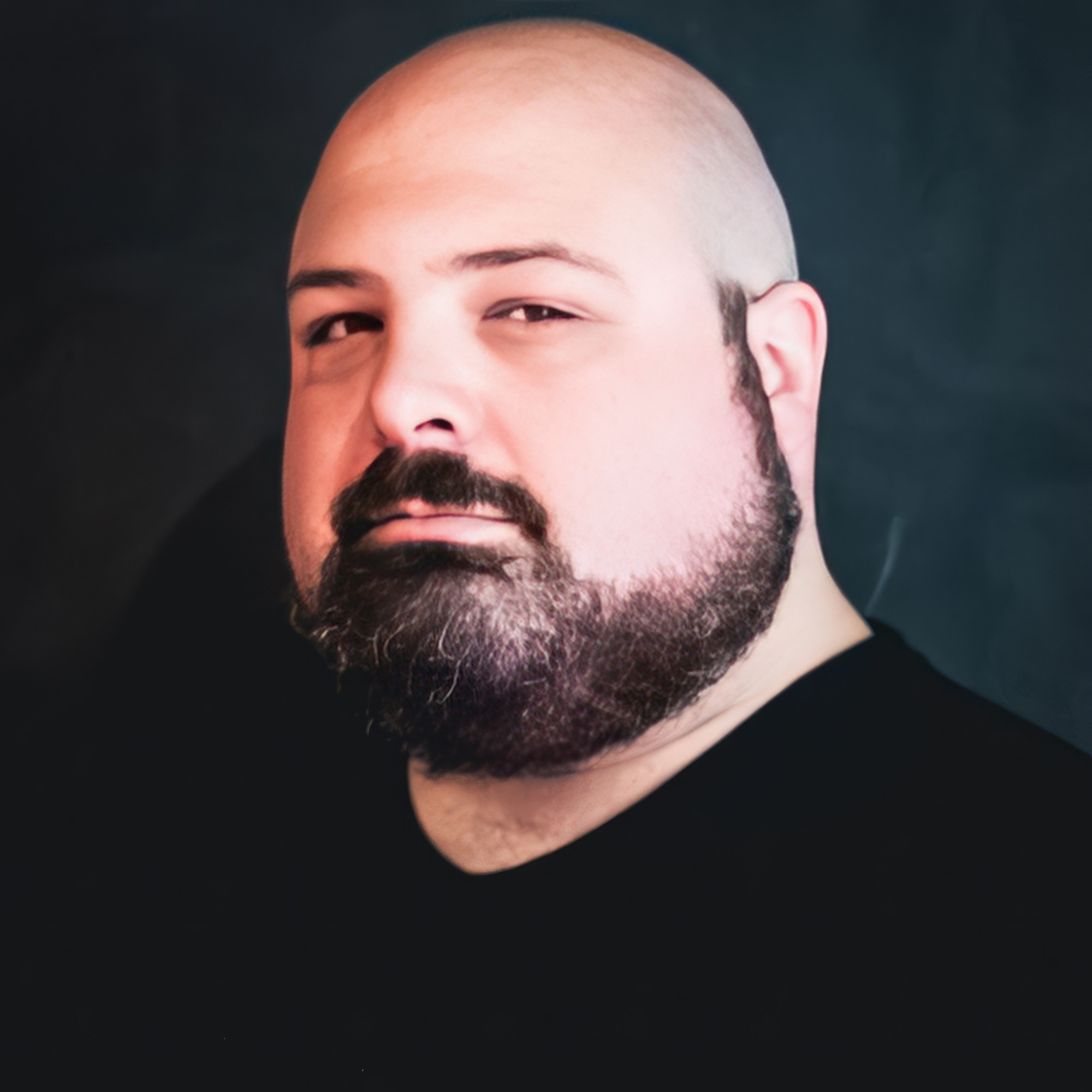
In our Customer Spotlight series, we’re interviewing experienced freelancers in the Rounded community to share their stories and the lessons they’ve learned. This month, we caught up with Tom Valcanis, founder of I Sell Words.
I Sell Words is a freelance copywriting and consulting business focusing on SEO copywriting, web content, and newsletter strategy. Over the years, Tom has worked with an impressive roster of clients, including Virgin Australia and the Movember Foundation.
Tom walks us through:
How he got his start as a freelance writer
Why AI isn’t the career-ending revolution it’s cracked up to be
How copywriting has changed in recent years and what 2025 has in store
Top tips for running a successful sole trader business
Let’s dive in!
Tom’s journey as a freelance writer
Tom got his start as a freelance journalist in 2009, writing articles for publications such as The AU Review, The Big Issue, and Beat Magazine. A year later, he also began taking on copywriting and media consulting work to help support himself as he completed his Master of Journalism degree.
Upon graduating in 2012, Tom decided to try to get a ‘real job’, working as a Marketing and Communications Officer at a non-profit organisation.
I was in this role with a lot of downtime, so I would continue to work on the freelance stuff when the workload was light to bring in some extra cash.
In 2014, the organisation decided to redo their website. I’d done website copywriting for clients before, so I gave it a go. That was when I realised I could probably do this myself, make a bit of money, and not just have to write about one thing.
Challenges of building a freelance writing business
While Tom had been successfully freelancing on the side for 5 years, going full-time was a whole different story.
I went into this whole business thing so green, I was glowing like Mr. Burns. I expected to run some ads, get some clients, and hoped my skillset was so unique and awesome that people would just sign up. But obviously, there are a lot of freelancers out there, and it takes a lot more work to build a successful business.
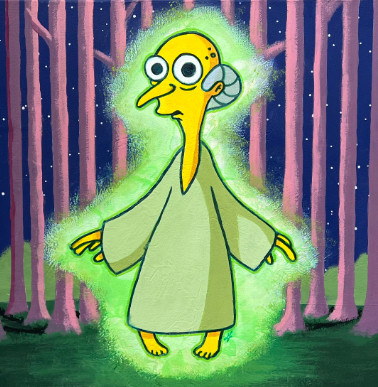
Tom quickly realised that to succeed, he needed to put his ego aside.
I had to say to myself, “Okay, I know nothing about this. Who can I ask? Who's done this before and how did they do it?”
One of the first lessons Tom learned was that networking was essential. He attended as many free events and conferences as possible to connect with others and learn from their experiences.
Another major hurdle was the lack of awareness among his target audience.
In 2014, a lot of business owners were still like, “Oh, you’re a copywriter? Do you put the little C symbol on the end of TV shows?” It was a major roadblock in getting new clients, so I had to simplify things. I sell words because my words sell.
How is AI affecting creatives like Tom?
Like most creative freelancers, Tom has a lot of thoughts on AI and the creative industry. Perhaps surprisingly, he’s quite optimistic about the future.
I'm not convinced AI is the job replacer everyone says it is. It can be a helpful copilot that can take a lot of grunt work off your plate. But when it comes to more creative tasks, tools like ChatGPT struggle because they depend on the ingenuity of the operator.
If you remove writers and creatives from the process, you get garbage input and garbage output.
I've been seeing newsletters, social media posts, and videos that are so obviously machine-generated––it just makes people switch off.
Tom is already seeing clients return to the fold after experimenting with AI in 2024.
We’re in a cost-of-living crisis, and it’s a natural impulse for businesses to cut expenses wherever possible. And suddenly, all these ‘magic’ generative AI tools say they can replace human creatives. It’s the perfect storm.
Now, businesses are realising that churning out AI content is fine if you just want words on a page, but not so great if you want those words to be meaningful. If you want to see strategy and thought put into the content––and an actual return on the investment you’re making––that’s the value of hiring creatives.
Ultimately, as Tom points out, it can be quicker and more cost-effective to leave creative work to the professionals:
Something a lot of people don’t think about is that AI ‘writing’ is generated. It’s not written in the same way a human writes. Tools like ChatGPT draw on hundreds and hundreds of gigabytes worth of generic stuff and regurgitate words.
I’ve been asked to rework blog posts made by AI to make them sound more human and in all honesty, it would have been much faster if I’d just written it myself from scratch.
So, will AI replace copywriters and change the way we do business?
According to Tom, no.
(Or at least not yet).
I don't think AI is a transformative technology in the same way the personal computer or smartphone was. You can’t run a business without a device and an Internet connection, but you can do it without turning to AI.
This echoes sentiments we’ve been hearing from experts such as Emmanuel Maggiori, PhD, who argue the AI bubble will soon burst. He points to similar booms in the 60s and 80s, when massive investments in AI didn’t deliver on their promises—partly because the technology wasn’t ready, and partly because of businesses that forced AI into areas where it didn’t belong.
The same pattern seems to be repeating now, as Tom notes:
Companies are rushing to slap AI onto everything, often without clear value. It’s now become a buzzword—meaning everything and nothing––and people are getting sick of it. That novelty of interacting with AI that 'talks back' is wearing off, and people are asking ‘So what?’
How else has the copywriting industry changed in the last decade?
According to Tom, both the content copywriters are producing and the skillsets required have evolved.
When I was starting up, you couldn't avoid being an SEO copywriter. You had to know fundamental SEO. In the same way, today’s copywriters need to have at least some understanding of digital marketing as a whole: PPC, SEO, etc. You need to know how your content fits into the bigger picture.
Gone are the days when copywriters were paid to churn out how-to guides and generic blogs. Today, copywriters will find more luck in helping clients produce high-quality thought leadership and original research.
As Tom says:
The old-school approach to blog writing is pretty much dead. Say you’re in finance. Ten years ago, you would write an article answering a common search, like “What is an interest rate?” You would write a high-quality blog to try and leapfrog the competition, but the content didn’t have to be that authoritative.
Now, those kinds of searches can just be answered by AI. You’re not going to get paid to write those types of articles.
Copywriters are turning to the kind of content that can’t be created by AI: original research that provides readers with new information or puts a new spin on the topic. For example, I did a 2000-word paper on fuel prices for one of my clients, and the results were incredible. We ranked highly purely because of the novel information and the quality.
This is good news for freelance writers, as this type of content is ripe for companies to outsource and cannot be delegated to AI.
If you just want words on a page––and you don’t care what they are and what order they’re in––AI is fine. But if you’re trying to make a real go of SEO or want content that will go ‘viral’, you need a human.
Tom’s predictions for 2025
What does 2025 have in store for copywriters and creatives? Here are Tom’s thoughts.
Higher barrier to entry
It’s going to be tough for beginners, because those simpler content pieces are just going to be farmed out to AI. Aspiring creatives need to adapt and take on multiple roles—producer, director, and creator—much like YouTubers do today. If you want to stand out, you need to multi-skill.
AI will get smarter––but only incrementally
Those worried about the impending AI and whether computers will begin to ‘think’ for themselves can rest easy.
According to researcher Emmanuel Maggiori, PhD, humans have only managed to map the brain of one living organism so far – a worm with around 300 neurons. The human brain has more neuron connections than stars in the sky, meaning we have a long way to go before AI can mimic our thought processes.
Tom compares artificial intelligence to the Chinese room thought experiment by philosopher John Searle:
Imagine there’s a guy in a room with Chinese characters on one side and all the corresponding English characters on the other. A Chinese person puts an English word they want translated into this room, the guy looks at it and matches up the different signals, and it spits out a Chinese translation to the person outside.
Everyone assumes there’s a Chinese speaker in this room, but it’s just this English speaker matching up symbols. That’s what generative AI does: it matches up symbols and probabilities. Ultimately, there is no real intelligence there––it’s a mathematical model. In that regard, there's only a limited amount of stuff it can do based on the data it has.
The business case for AI will be under scrutiny
Apart from consumers tiring of ‘AI’ appearing in their products, there are also concerns about environmental and financial sustainability.
The massive data centres powering these AI models require enormous amounts of energy, so how can companies justify offering $20 or $30 subscriptions with such high operating costs? Unless there's some trade-off between using AI to improve the generation without using as many resources, how can they be making a profit?
Businesses will start to re-evaluate their AI usage
In 2025, Tom suggests that businesses will step back and assess their AI investments.
Businesses have plugged AI into every possible process, only to find that it didn’t deliver the productivity and time savings promised. Many of them will review their tech stacks this year and wonder, “Why am I spending so much money on all these tools?
Final word: Tom’s top tips for solo business owners
1. Network face-to-face.
Building real connections can open doors and grow your business in ways that online networking alone can’t.
2. Invest in your weak spots.
If you struggle with finances, sales, or marketing, seek out mentorship or training. You don’t need a formal degree—seminars, workshops, and paid programs can give you practical skills. Just be cautious of generic “tips and tricks” that lack real value.
3. Get a fresh perspective.
We often juggle multiple roles as sole traders—administrator, entrepreneur, and technician. If you excel in one area but struggle in another, outside guidance can make a huge difference. I started seeing a sales trainer and it's absolutely revitalised my business.
4. Recognise your worth.
It’s easy to undervalue your skills, but remember: what feels effortless to you is impressive to others. I really admire artists and designers, because I can’t even draw a stick figure. It’s woeful.
There’s a reason you chose to start your own business and why you’re not making easy money somewhere else in a 9-5 that doesn’t fulfil you. You have a fundamental belief in what you do, and that what you do is valuable.
Bonus: How does Tom run his business with Rounded?
When I first started, I was using MYOB and it was so confusing and convoluted. I just dreaded opening it up and putting out invoices and expense reports. But Rounded makes it so easy.
It's an open tab on my browser permanently. It's just a great way to log expenses and put out invoices, and it gets better every year.
Tom’s favourite features?
The invoice reminders are awesome. The invoice tracking is fantastic, because I know when my clients haven’t opened the invoice and when they’re lying. And the bank feeds are great––it now takes me around two minutes to do my income and expenses instead of manually looking at everything.
What’s next for Tom and I Sell Words?
This year, Tom is making a big push to newsletter marketing:
Newsletter marketing is one of the biggest growth platforms for businesses and is more powerful than ever, because it’s opt-in. People choose to see your content and are engaged from the beginning. 99% of people have email and unlike with social media, you don’t have to struggle to be seen.
Tom’s new offering, Database Dynamo, is all about refreshing old email lists and turning them into powerful lead generation channels.
If you've got a dormant database, I'm going to deliver dollars with newsletter marketing. This service is for businesses that really wants to do newsletters but doesn’t have the time or don’t know where to start.
Want to find out more about this or any of Tom’s other services?
Connect with him here:
Website: https://www.isellwords.com.au/
LinkedIn: https://www.linkedin.com/in/crushtor/
Contents
- Introduction
- Tom’s journey as a freelance writer
- Challenges of building a freelance writing business
- How is AI affecting creatives like Tom?
- How else has the copywriting industry changed in the last decade?
- Tom’s predictions for 2025
- Final word: Tom’s top tips for solo business owners
- Bonus: How does Tom run his business with Rounded?
Join newsletter
ABOUT ROUNDED
Invoicing and accounting software for sole traders. Get paid faster and relax at tax time.
